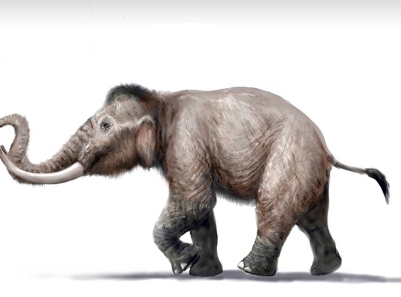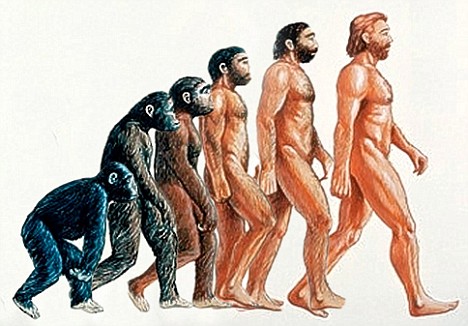 I have stated before that there are quite a few board I frequent and this was an interesting idea that I found just yesterday. The idea was proposed on the site, The Tallest Man. You can find the board message HERE.
I have stated before that there are quite a few board I frequent and this was an interesting idea that I found just yesterday. The idea was proposed on the site, The Tallest Man. You can find the board message HERE.
Apparently a rather tall sideshow individual from the 19th century who was 6′ 9″ Eugene Arceau claimed that he would sleep 36 hours at a time and managed to gain 4 inches from it. (Resource)
So are we supposed to believe in this type of claim? I am not sure since the story is so anedoctal but there should be something we can take from it.
Sleeping does help increase our height, at any age. With sleep, the vertebrate in our body does decompress and the disks are allowed to expand slightly. After a long sleep, we are taller when we wake up than before we went to sleep.
During the formative growing years, we learn that growth hormones are released at the greatest rate when we are sleeping. Usually this is when we are in deep sleep. There are many articles that shows the link between deep sleep and the excess production and release of HGH, thus height increase.
Of course one can easily point out that our growth plates have fused so deep sleep might not work , but I don’t think it would hurt to get some more sleep anyway. Even without our growth plates, we do wake up at least half an inch taller for most of us.
I wanted to post this long list of sleeping tips for the reader which was taken from this link HERE
• Sleep in a comfortable and firm mattress. If it is not firm enough, place a sheet of plywood underneath the mattress. Sleeping on a hard surface will align your spine in the natural position. This will lengthen your spinal, and also allow growth hormone to easily travel across the body.
• Sleep in a room that is dark, quiet and fresh smelling. Do not expose yourself to bright light while you aresleeping. Light will make your brain stay awake.
• It is important to sleep in a well ventilated room. Don’t be afraid to open a window, even in winter. It is better to put on an extra woollen blanket than to breathe in stale air. The amount of clean oxygen rich air that you breathe has an effect on your growth. Poor air can prevent you from growing during sleep.
• Sleep with clean, soft, and comfortable clothes. Rough clothing can block the blood circulation and make you shift and turn many times during the night, thus prevent you from deep sleep. Remember your growth hormone can only work well when you fall into deep sleep.
• Keep your hands and feet warm. Scientific studies have shown that warm hands and feet will help induce REM (rapid eye movement) deep sleep. Cold hands and feet will keep you from deep sleep.
• Drink a big glass of water before going to bed and when you wake up; this will help clean out your system Milk can also help you sleep. It contains an amino acid called tryptophan. Which produces the effect of a sedative. Do not consume any foods or drinks that contain caffeine, nicotine, or alcohol at least 4 to 5 hours before going to bed. Caffeine and nicotine are stimulants that will keep you from sleeping. Also, refrain from a large meal at least 3 hours before bed time.
• Do exercises during the day can help you sleep better at night.
• Take a hot bath before going to bed helps induce deep sleep because it cleans your body and relaxes tense muscles.
• Practice total relaxation and deep breathing for a few minutes before you go to bed.
• Relax from head to toe. Close your eyes and relax every part of your body. Do complete breathing exercises by following the three phases: (1) Inhale slowly and deeply through the nose for 3 to 5 seconds making sure that your stomach as well as your chest expand. (2) Hold your breath for another 3 to 5 seconds, tighten your stomach muscles lightly. (3) Exhale slowly and fully through the mouth and nose. This breathing exercise will help smooth your blood circulation and get your body ready to rest.
• Maintain a habit of sleeping at the same time everyday, including weekends. This will help you develop a regular rhythm for sleep. Your brain will send you “sleep signal” at about the same time every day, which can help you fall into deep sleep easier and faster.
• Each person has his/her own specific daily sleep requirement. It is not true that the more you sleep, the better it is for your growth. Too much sleep will cause your body to develop laziness and slow down your metabolism, thus increase the danger of gaining weight. On average, a young adult who is growing needs at least 8 hours sleep every day. Teens need 9 hours or more. However, this is just an average and may not apply to you precisely.
• The best way to figure out the exact amount of sleeping time you need is not to calculate it at all. Just sleep early every night. Do not use any alarm clock, and let yourself wake up naturally. Your body has its own biological clock that can determine the exact amount of sleep it needs. As long as you have good sleeping habit and do not break it (by forcing yourself to stay up too late or get up too early), your body will take good care of itself.
• Also, it is easy for you to detect if you get enough sleep each day. If you are energetic and do not feel sleepy or very tired the whole day, then you had enough sleep last night. Otherwise, you had better readjust your schedule and try to sleep longer.
• Sleep with appropriate posture is also very important for your growth during sleep. Sleep with correct posture can help you lengthen your spine and increase your height; sleep with incorrect posture can put
strains on your neck, shoulders and back and stunt growth during sleeping.
• Sleep on your back with a flat pillow under your knees. This will align your spine properly and prevent any back aches caused by sleeping in a bent position. Raising your knees and feet slightly will help your brain get more oxygen rich blood. The greater amount of oxygen that your brain receives the higher the energy you will have to help yourself grow during sleep.
• Sleep on side, with your knees bent. This will effectively flatten the back. A flat pillow may be used to support the neck, especially if shoulders are broad.
• Do not use high pillow. While lying on your back with your head resting on a high pillow, your neck is bent forward and your back is arched in a very unnatural position. This will put strains on your neck, shoulders, and back, and also stunt growth since your spinal column is arched during most time of the night. Do not sleep face down. This will exaggerates swayback and strain neck and shoulders.
• “Early to bed, early to rise, makes a man healthy, wealthy and wise”. Be in harmony with nature. The more we distance ourselves from nature the more we become unhappy and out of touch with ourselves.
Me: So jump into bed right now and get some rest. Your body deserves it.




